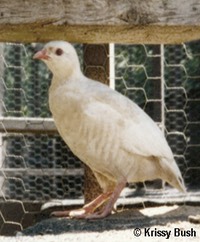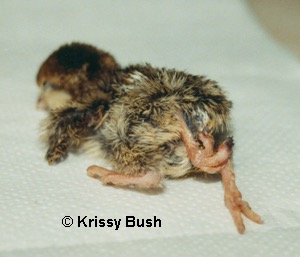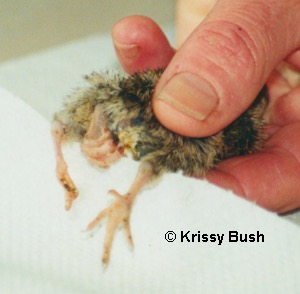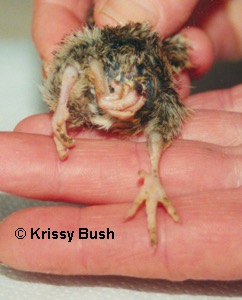• Domestication has had a variety of effects on different species of birds. The process of domestication along with selection by humans has produced many traits that are not found in the wild because they are the result of inbreeding (which does not occur as frequently in the wild) or because they reduce the fitness of the bird. The following are examples:
Colour Mutations
• They are found commonly in almost every variety of cage bird in captivity and may include dilution, leucism, schizochroism, & albinism. Colour mutations are not normally found in the wild because they are easily recognizable and captured by predators at an early age. Wild type plumage normally provides a sort of camouflage with the surrounding environment which is advantageous for survival. Surprisingly, colour mutations are not common in galliform birds which have been domesticated by man for thousands of years.
Physical Mutations
• They are much more common in domesticated birds. Many result in early death or make the bird an easy target for predators, therefore they will not be frequently seen in wild birds.
• E.g. Extra limbs, alterations in plumage structure, blindness, etc.
• Domestication and inbreeding go hand in hand because inbreeding is used as a tool to create new mutations, to maintain certain genetic lines, and is an unfortunate side effect of having to work with a small gene pool. Inbreeding can result in:
1) Fixation of alleles in certain strains. E.g. Traits that would normally be eliminated in the wild become a common occurrence in captivity - for instance - colour mutations.
2) Production of many genes on different chromosomes that produce the same effect. E.g. Three different genes on three different chromosomes which all produce the same mutation (for instance - lutino).
3) Accumulation of lethal mutations in domesticated birds which would have been quickly eliminated in wild birds by natural selection.
References
Cooke, F. and Buckley, P.A. 1987. Avian Genetics A Population and Ecological Approach. Academic Press. Chapter 1.



